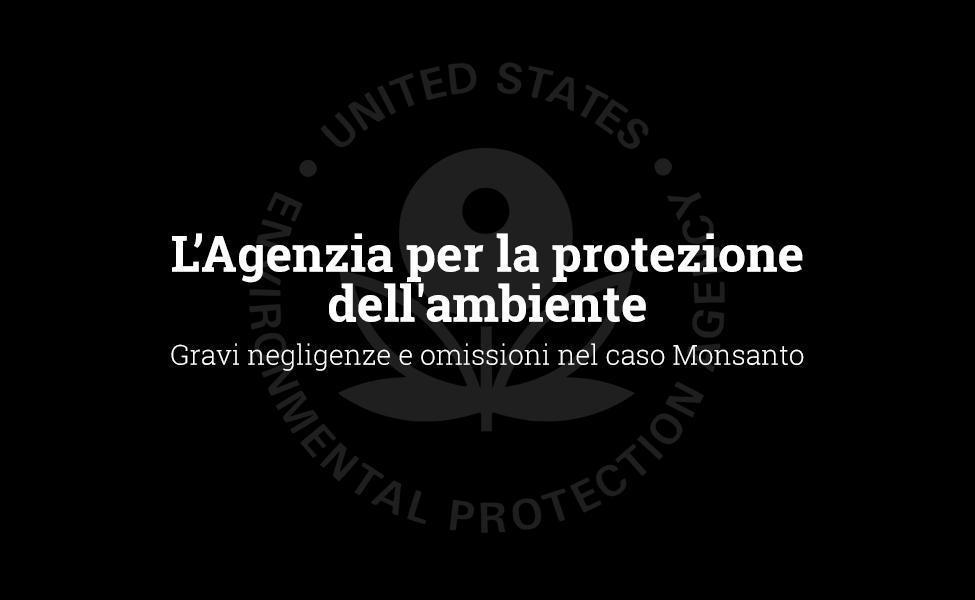EPA: Serious negligence and omissions in the Monsanto case

The three public trials, which involved Monsanto, raised concerns about the negligent supervision of all pesticides by the Environmental Protection Agency.
Ever since Monsanto introduced its Roundup herbicide line in 1974, the products have been touted by the company and regulators as extremely safe.
But the emergence of some business secrets it revealed a secret campaign to cover pesticide risks and raised worrying questions about the negligent oversight of all pesticides by the Environmental Protection Agency and other regulatory agencies that are expected to protect public health.
In California two recent trials Roundup product liability resulted in massive damage to Monsanto after it was discovered that the company's herbicides contributed to the onset of cancer and that they did not warn of the risks. A third ongoing trial now in Oakland, California has led to important findings emerging:
- At the same time that Monsanto does refused to conduct studies on long-term product safety, the company spent millions of dollars on secret PR campaigns - including $ 17 million in a single year - to fund studies and ghost op-outs aimed at discrediting independent scientists whose work found dangers with Monsanto herbicides.
- Several Monsanto scientists have spent years putting together a document that was published in a scientific journal in 2000, concluding that Roundup posed no risk to human health. The internal emails show that the team has been applauded by corporate executives for their hard work. But when the work was published in a scientific journal, no Monsanto employee was listed as an author. Regulators, including the EPA, cited that card as a reference to guarantee consumers that Roundup was safe.
- Numerous other examples of ghostwriting from Monsanto employees have emerged. In a 2013 publication, a company scientist emailed work colleagues about being able to make it look like he was an author other than himself by finding an available academic. The scientist said it would have been better if the paper hadn't come from Monsanto.
- When the U.S. Agency for Toxic Substances and the Disease Registry attempted to assess glyphosate toxicity in 2015, Monsanto expressed concern about what the agency could have found and asked for EPA officials' assistance to delay. that review. Efforts delayed the publication of the public draft of the review - which was originally due to be published three years ago - until the beginning of this month. Just as Monsanto had feared, the agency's review found links between cancer and glyphosate.
- Although Monsanto was aware of tests that showed how easily Roundup's chemicals were absorbed by the skin, neither the company nor the EPA warned consumers of the need to wear protective clothing.
- In the 80s, EPA scientists saw that mice treated with glyphosate developed rare kidney cancers, claiming they had demonstrated cancer risks for people. After Monsanto protests, EPA top echelons canceled their scientists and assured Americans that glyphosate carries no cancer risk.
Precisely because the chemical has been treated as much safer than other pesticides, in the last 45 years glyphosate has become practically omnipresent: the residues of the chemical have been documented in food, air, water and soil samples, as well as inside of people who have never used the pesticide. The chemical has even been detected in raindrops.
All this raises a worrying question: if what has been touted as the "safest" pesticide actually causes cancer, what insurance do we have for the hundreds of other pesticides that the EPA has insured as safe?
Source: www.theguardian.com

